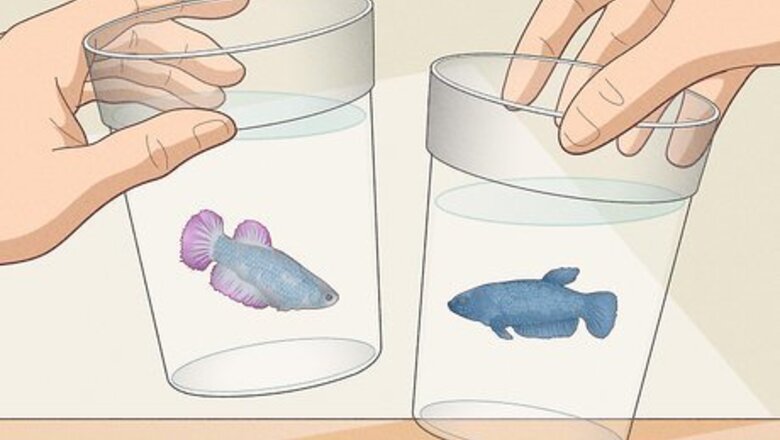
views
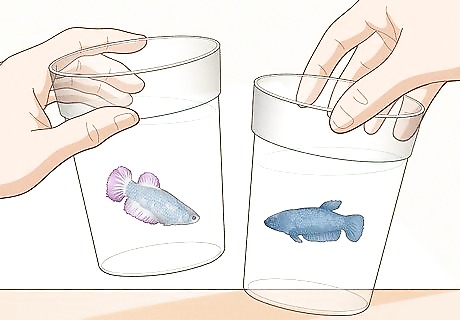
Choose less aggressive female bettas. This can often be a difficult task, since many pet stores keep all of their betta fish alone in a cup or a bowl. When you are choosing the betta fish, observe their personalities. If the betta is flaring her gills at the fish around her, this is a sign of aggression, and they may not be suitable for a betta sorority. Opt to buy more calm betta fish, and if the betta fish in the store are already in a betta sorority, then this usually means they are suitable tank mates for other female betta fish.

Provide your betta sorority tank with lots of plants and hiding spots. Sometimes, a betta sorority can become an aggressive environment, especially when the betta fish are all new to the tank and are establishing the hierarchy. You will want to add lots of live or fake plants to the sorority tank to break up the sight lines, and lots of decorations for them to hide in if they need to get away.

Ensure that your tank is properly heated (76-78 degrees Fahrenheit is ideal) properly filtered, and is a sufficient size for a betta sorority. Female betta fish cannot be kept together in a small tank without excessive fighting; therefore, it is important to put them in a tank that is at least 25 gallons. Providing insufficient tank conditions for your betta sorority will result in more stress for the fish, and may in turn lead to more aggression. This also includes doing water changes once per week.
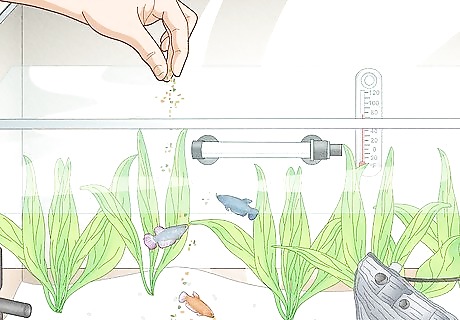
Ensure that your betta fish are well fed. If you notice your betta fish are nipping each other's tails, or are acting more aggressive then usual, this could be a sign that they are hungry. Feed your betta fish a mix of dry, frozen, or freeze-dried food once per day. Some people fast their betta fish one day per week to improve digestion, but this is optional. That said, make sure not to overfeed your fish, since their stomachs are rather small.
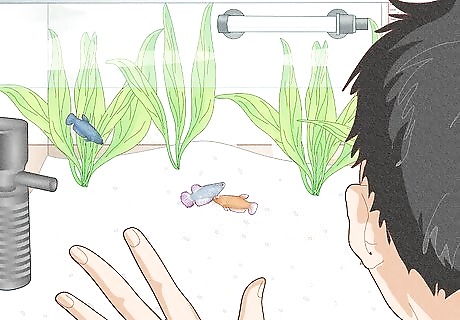
Monitor the betta sorority tank closely. If you notice that certain bettas in the tank are fighting, or if you notice one particular betta that is either bullying or being bullied, you may have to remove that particular betta. Watch closely for torn fins, colour fading, disinterest in food, resting often at the bottom of the tank, etc.

Add "filler fish" to distract the bettas. If you have a betta sorority that is aggressive, you may want to try adding "filler fish" to the tank to distract the betta fish from each other. These "filler fish" are small, fast fish that get along with most bettas, and will fill in open space in the tank. Some good options include harlequin rasboras, neon tetras, less colourful female guppies, ember tetras, etc. The type of fish you choose as your "filler fish" will completely depend on your own individual sorority.
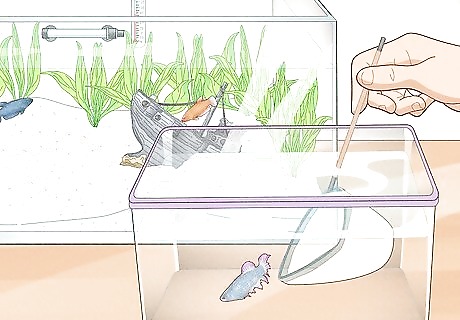
Have a quarantine or hospital tank available. This is a tank that is kept specifically for injured fish, sick fish, fish that are being bullied, or fish that are bullying. It is always handy to have one of these tanks set up in case of an emergency.




















Comments
0 comment